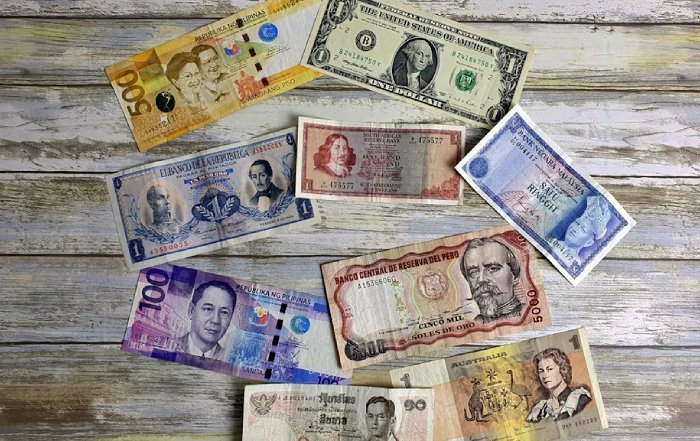How Digital Transformation Continues to Shape the Global Economy in 2025
Digital transformation has moved from a strategic option to an economic inevitability, and by 2025 it has become one of the primary forces reshaping global growth, competition, and societal expectations. Across North America, Europe, Asia-Pacific, Africa, and South America, organizations of all sizes are reconfiguring how they create value, manage risk, and engage with customers, while policymakers struggle to keep pace with technologies that transcend borders and traditional regulatory frameworks. For the audience of FinanceTechX, which stands at the intersection of finance, technology, and global business, understanding the contours of this transformation is no longer a theoretical exercise but a prerequisite for strategic decision-making and long-term resilience.
The Macroeconomic Weight of Digital Transformation
By 2025, digital technologies have become deeply embedded in global GDP growth, productivity trends, and trade flows. Institutions such as the International Monetary Fund emphasize how digitalization influences everything from inflation dynamics to labor market participation, particularly as automation and remote work reshape traditional economic models. Data-driven services, software, and platform-based ecosystems increasingly account for a growing share of output, while intangible assets such as algorithms, data sets, and digital brands now rival physical capital in importance. Learn more about how digitalization is changing macroeconomic policy frameworks through resources from the IMF and the World Bank.
For advanced economies like the United States, the United Kingdom, Germany, Canada, and Australia, the digital economy has become a key driver of productivity growth at a time when demographic headwinds and capital saturation threaten to slow expansion. Emerging markets in Asia, Africa, and South America, including countries such as India, Brazil, South Africa, and Indonesia, increasingly see digital transformation as a way to leapfrog legacy infrastructure constraints, especially in payments, logistics, and public services. The global diffusion of smartphones, cloud computing, and high-speed connectivity has enabled new forms of participation in cross-border commerce, which is reflected in the rising share of services and digital goods in international trade statistics maintained by the World Trade Organization.
At the same time, digital transformation amplifies structural inequalities between firms, sectors, and regions. Leading technology and financial institutions gain scale advantages through network effects and access to vast data resources, while lagging firms struggle to justify the investment in cloud migration, cybersecurity, and automation. This divergence is evident in capital markets, where technology and fintech stocks listed on major exchanges in New York, London, Frankfurt, Hong Kong, Singapore, and Tokyo command premium valuations relative to traditional industrial players. Readers can follow these structural shifts in market capitalization and sector performance in more detail through the FinanceTechX coverage of the stock exchange landscape.
Fintech as the Financial Engine of Digital Economies
Financial technology sits at the heart of digital transformation because it enables value to move at the speed of data. In 2025, fintech is no longer a niche segment but a foundational layer for payments, lending, wealth management, insurance, and capital markets across both developed and emerging economies. The rise of embedded finance, where financial services are integrated seamlessly into non-financial platforms, is transforming customer journeys in e-commerce, mobility, healthcare, and enterprise software. To explore these developments in depth, readers can refer to the FinanceTechX vertical dedicated to fintech innovation.
In the United States and Europe, open banking and, increasingly, open finance frameworks have unlocked new forms of competition and collaboration between incumbent banks and digital challengers. Regulatory initiatives such as the European Union's PSD2 and its evolving successors, along with open banking rules in the United Kingdom overseen by the Financial Conduct Authority, have enabled third-party providers to access customer data securely and build new value propositions around personalized financial management and alternative credit scoring. Interested readers may review updated regulatory developments and guidance from the FCA and the European Commission.
In Asia-Pacific, markets such as Singapore, South Korea, Japan, and Australia have become testbeds for digital banking licenses, real-time payment systems, and cross-border payment corridors. The Monetary Authority of Singapore has actively promoted innovation in digital assets and payment infrastructures, while maintaining rigorous standards on risk management and consumer protection. Learn more about these initiatives through the MAS portal, which provides insight into how forward-looking regulators are balancing innovation and stability.
For emerging markets in Africa and South Asia, mobile money and agent banking have revolutionized financial inclusion. Platforms inspired by pioneers such as M-Pesa in Kenya have enabled millions of previously unbanked individuals to access basic financial services, receive remittances, and participate in digital commerce. Global organizations such as the Bill & Melinda Gates Foundation and the Alliance for Financial Inclusion continue to publish research on how digital financial services can accelerate inclusive growth; readers can explore these themes further via the Gates Foundation and the AFI.
The Role of Founders and Digital Leadership
Behind every successful digital transformation initiative stand founders, executives, and boards who understand both the opportunities and the risks of disruptive technologies. In 2025, leadership in digital strategy is no longer confined to Silicon Valley; it is distributed across hubs in London, Berlin, Paris, Toronto, Vancouver, Sydney, Melbourne, Singapore, Seoul, Tokyo, Stockholm, Copenhagen, Amsterdam, Zurich, and beyond. The FinanceTechX community pays particular attention to how visionary founders and CEOs translate technological potential into scalable, sustainable business models, as covered in the platform's dedicated founders section.
Modern digital leaders must combine technical fluency with regulatory awareness and ethical judgment. They are expected to understand the implications of artificial intelligence, cloud architectures, and data governance, while also navigating complex issues such as algorithmic bias, cross-border data transfers, and digital identity. Business schools and executive education providers, including leading institutions featured by the Harvard Business School and INSEAD, have expanded their curricula to emphasize digital strategy, fintech, and responsible innovation, equipping the next generation of leaders with the skills required to thrive in an increasingly digital economy.
Regional differences also shape founder experiences and investor expectations. In North America, venture capital ecosystems continue to support high-risk, high-growth digital ventures, particularly in fintech, crypto infrastructure, and enterprise AI. In Europe, founders often navigate a more fragmented regulatory environment but benefit from coordinated initiatives such as the EU's Digital Single Market strategy. In Asia, founders in China, India, Singapore, and South Korea operate within fast-growing digital consumer markets and increasingly sophisticated domestic capital pools, while also adapting to evolving regulatory scrutiny. The global nature of digital entrepreneurship underscores the value of platforms like FinanceTechX, which provide cross-border perspectives on funding, exits, and strategic partnerships for founders operating in multiple jurisdictions.
AI and Automation as Catalysts for Economic Reinvention
Artificial intelligence has moved decisively from experimentation to deployment by 2025, permeating sectors as diverse as banking, healthcare, manufacturing, logistics, and education. Machine learning models enhance credit underwriting, fraud detection, customer service, and investment strategies, while generative AI supports content creation, software development, and knowledge work. For readers seeking targeted coverage of these trends, FinanceTechX offers a dedicated AI channel that examines how organizations are operationalizing AI responsibly.
Central banks, regulators, and multilateral institutions increasingly analyze AI's impact on productivity, labor markets, and financial stability. The Bank for International Settlements has published extensive research on how AI transforms risk management, trading, and supervision in the financial sector, highlighting both efficiency gains and new systemic vulnerabilities. Readers can explore these insights through the BIS to understand the evolving regulatory and supervisory approaches to AI in finance.
At the same time, concerns around job displacement, skills mismatches, and wage polarization have become more pronounced. Organizations such as the OECD and the World Economic Forum emphasize the need for large-scale reskilling and lifelong learning initiatives, particularly for mid-career professionals in roles susceptible to automation. Learn more about workforce transitions and future-of-work scenarios through the OECD and WEF, which provide data-driven analysis and policy recommendations. For the FinanceTechX audience, these developments translate into strategic imperatives around talent acquisition, upskilling, and organizational redesign, themes that intersect with the platform's coverage of jobs and careers in digital finance.
Crypto, Digital Assets, and the Next Phase of Digital Finance
Cryptoassets and blockchain-based infrastructures have matured significantly by 2025, even as volatility, regulatory uncertainty, and market consolidation continue to shape the sector. While speculative trading remains a visible component of the crypto ecosystem, the conversation has broadened to include tokenized securities, stablecoins, central bank digital currencies (CBDCs), and decentralized finance (DeFi) protocols that interface with traditional financial markets. The FinanceTechX crypto section follows these developments with a focus on institutional adoption and regulatory clarity.
Central banks across the world, including those in the United States, the Eurozone, the United Kingdom, China, and several emerging markets, are piloting or exploring CBDCs as a complement to physical cash and existing electronic money. The Bank of England, the European Central Bank, and the People's Bank of China have published extensive research and consultation papers on design choices, privacy considerations, and implications for commercial banks, which can be reviewed through the Bank of England and ECB websites. These initiatives are reshaping the architecture of payment systems and raising fundamental questions about the role of public and private money in digital economies.
Institutional investors, including pension funds, asset managers, and corporates, have become more selective in their exposure to digital assets, focusing on regulated custodians, compliant exchanges, and tokenization platforms that meet rigorous standards of governance and transparency. Leading financial hubs such as New York, London, Zurich, Singapore, and Dubai are competing to position themselves as trustworthy jurisdictions for digital asset businesses, supported by evolving regulatory frameworks and guidance from bodies like the Financial Stability Board, whose work on global cryptoasset standards can be accessed via the FSB.
Cybersecurity, Privacy, and Digital Trust
As economies digitize, the attack surface for cyber threats expands dramatically, making security and trust foundational to sustainable digital growth. Financial institutions, technology providers, governments, and critical infrastructure operators face increasingly sophisticated cyberattacks, including ransomware campaigns, supply chain compromises, and data exfiltration attempts. For the FinanceTechX readership, this reality underscores the strategic importance of robust cybersecurity governance, which is covered in the platform's dedicated security section.
International frameworks and guidelines from organizations such as the National Institute of Standards and Technology in the United States and the European Union Agency for Cybersecurity in Europe provide reference architectures and best practices for managing cyber risk. Readers can examine these frameworks through the NIST and ENISA portals, which offer detailed resources on incident response, zero-trust architectures, and sector-specific guidance. Compliance with data protection regulations, such as the EU's General Data Protection Regulation (GDPR) and emerging privacy laws in jurisdictions including California, Brazil, and several Asian countries, further shapes how organizations collect, store, and process personal data.
Trust in digital systems also depends on transparent governance, ethical AI practices, and clear accountability mechanisms. Regulators and standard-setting bodies are increasingly focused on algorithmic transparency, explainability, and fairness, particularly in credit scoring, insurance underwriting, and employment-related decision-making. Financial institutions and fintechs that can demonstrate strong data ethics and responsible innovation are likely to gain a competitive advantage in customer acquisition and retention, especially in markets where digital literacy and privacy awareness are rising.
Green Fintech, ESG, and the Climate Imperative
Digital transformation intersects powerfully with environmental sustainability, as organizations harness data, analytics, and fintech solutions to measure, manage, and reduce their environmental footprint. Green fintech has emerged as a distinct domain in 2025, combining sustainable finance, climate data, and digital platforms to mobilize capital towards low-carbon projects and to enable more granular transparency in environmental, social, and governance (ESG) reporting. The FinanceTechX green fintech hub explores how these tools are being deployed by banks, asset managers, startups, and policymakers.
International agreements and initiatives, including those discussed at recent UNFCCC climate conferences, have placed increasing pressure on governments and corporations to align with net-zero emission trajectories. Learn more about global climate commitments and negotiations through the UNFCCC, which documents national pledges and sectoral pathways. Digital solutions play a crucial role in this context, enabling real-time emissions tracking, climate risk modeling, and impact verification for green bonds and sustainability-linked loans.
Financial regulators such as the European Securities and Markets Authority and the US Securities and Exchange Commission have intensified their focus on ESG disclosures, greenwashing risks, and climate-related financial risks. Their evolving guidance, accessible via ESMA and SEC, is pushing financial institutions and corporates to invest in high-quality data infrastructure, scenario analysis, and digital reporting tools. For the FinanceTechX audience, this convergence of sustainability and digital innovation represents both a compliance challenge and a strategic opportunity to differentiate through credible, data-driven ESG strategies, complemented by broader coverage of the environmental dimension of finance.
Banking, Capital Markets, and the Platform Economy
Traditional banking and capital markets are undergoing a profound transformation as digital platforms, neobanks, and alternative lenders reshape how credit, savings, and investments are intermediated. In 2025, leading banks in the United States, Canada, the United Kingdom, Germany, France, Italy, Spain, the Netherlands, Switzerland, China, Japan, and other major economies are investing heavily in core system modernization, cloud migration, and API-based ecosystems. Detailed analysis of these strategic shifts can be found in the FinanceTechX coverage of global banking trends.
Capital markets themselves are being re-architected through digital issuance platforms, algorithmic trading, and tokenization of real-world assets. Exchanges and market infrastructures in New York, London, Frankfurt, Zurich, Hong Kong, Singapore, and Sydney are experimenting with distributed ledger technologies to streamline settlement, enhance transparency, and reduce counterparty risk. Professional bodies such as the International Organization of Securities Commissions provide guidance on how securities regulation should adapt to these innovations, with resources available through IOSCO.
The platformization of finance also blurs traditional industry boundaries. Large technology firms in the United States, China, and other major markets continue to integrate payments, lending, and wealth management into their ecosystems, raising complex questions about competition, systemic importance, and regulatory perimeter. Antitrust authorities and financial regulators are increasingly coordinating their approaches to ensure that innovation does not come at the expense of market fairness or financial stability, a theme closely followed in the FinanceTechX business and policy coverage.
Skills, Education, and the Future of Work in a Digital Economy
Sustaining digital transformation requires a workforce equipped with the right mix of technical, analytical, and interpersonal skills. In 2025, the global competition for talent in data science, cybersecurity, software engineering, and digital product management remains intense, affecting companies across North America, Europe, and Asia-Pacific. Simultaneously, there is growing recognition that digital literacy and adaptability must extend beyond specialist roles to encompass the broader workforce. The FinanceTechX education section examines how universities, online learning platforms, and corporate training programs are responding to this challenge.
Countries such as Singapore, Finland, Sweden, and Denmark have become benchmarks for integrating digital skills into national education systems and lifelong learning policies. International organizations like UNESCO and the International Labour Organization provide frameworks and data on how education and training systems can adapt to technological change, which can be explored through UNESCO and ILO. For employers, the imperative is to develop holistic talent strategies that combine recruitment, internal mobility, continuous learning, and inclusive workplace cultures that support innovation and change.
Remote and hybrid work models, accelerated by the pandemic years, have become embedded in many sectors, enabling companies to tap into global talent pools across time zones and geographies. This shift has implications for real estate, urban planning, taxation, and social policy, as well as for corporate culture and employee engagement. For the FinanceTechX audience, which spans founders, executives, and professionals in fintech and financial services, the ability to lead distributed teams and to manage cross-border collaboration has become a core competency rather than a peripheral skill.
A Global, Interconnected Landscape for 2025 and Beyond
Digital transformation in 2025 is not a discrete project with a fixed endpoint but an ongoing reconfiguration of how economies function, how businesses compete, and how individuals live and work. It cuts across fintech, banking, crypto, AI, sustainability, security, and talent, weaving together multiple strands of innovation, regulation, and societal change. For stakeholders in the United States, the United Kingdom, Germany, Canada, Australia, France, Italy, Spain, the Netherlands, Switzerland, China, Sweden, Norway, Singapore, Denmark, South Korea, Japan, Thailand, Finland, South Africa, Brazil, Malaysia, New Zealand, and beyond, the challenge is to harness this transformation in ways that drive inclusive growth, resilience, and long-term value creation.
FinanceTechX positions itself as a trusted guide through this complexity, curating insights across global economic developments, world events, breaking news in digital finance, and the evolving intersections of technology, regulation, and capital. By focusing on experience, expertise, authoritativeness, and trustworthiness, the platform aims to support decision-makers as they navigate the strategic choices that will define the next decade of digital transformation and its enduring impact on the global economy.










